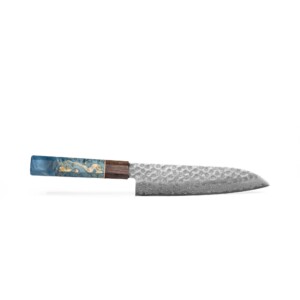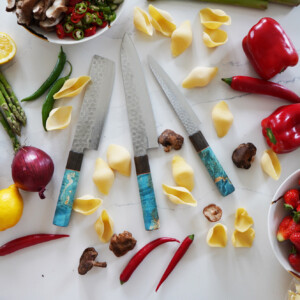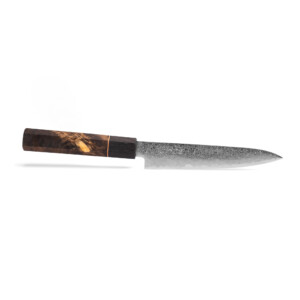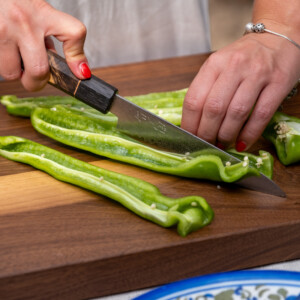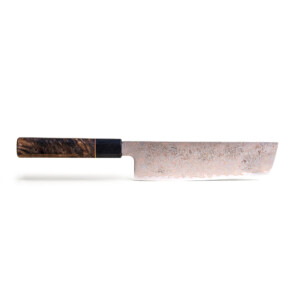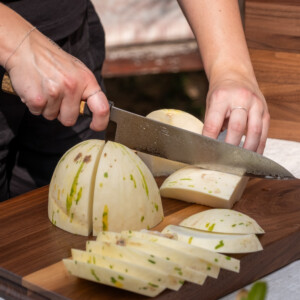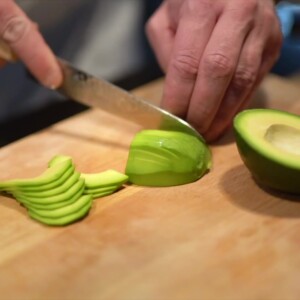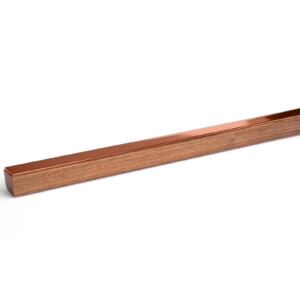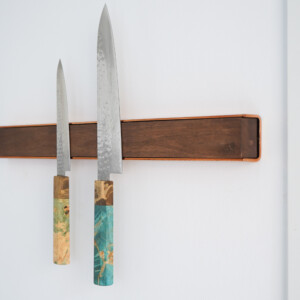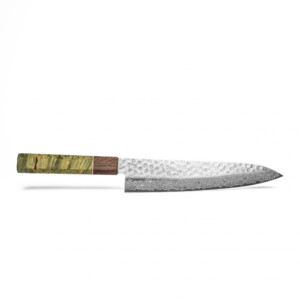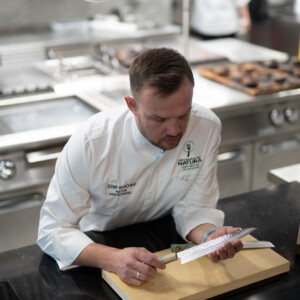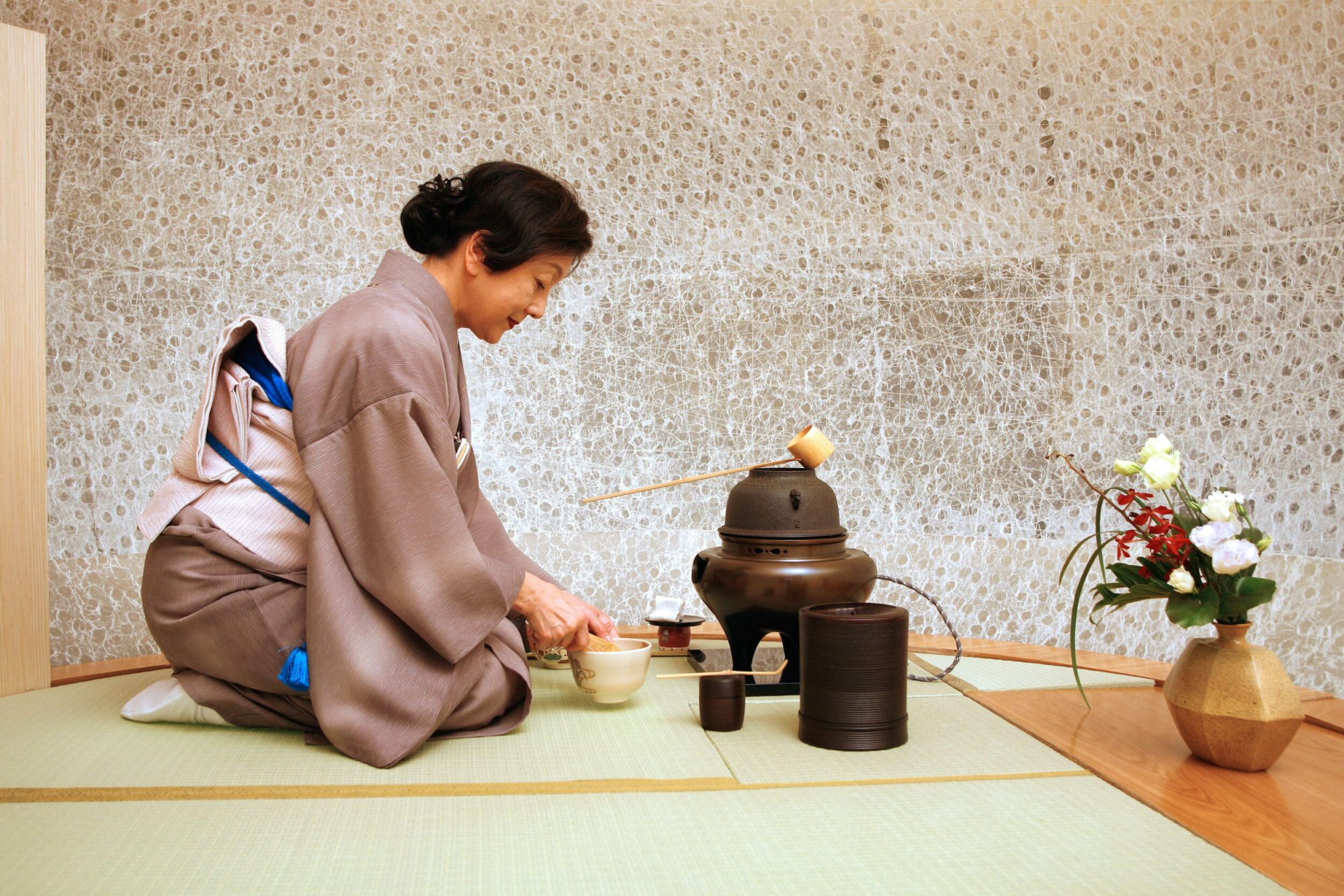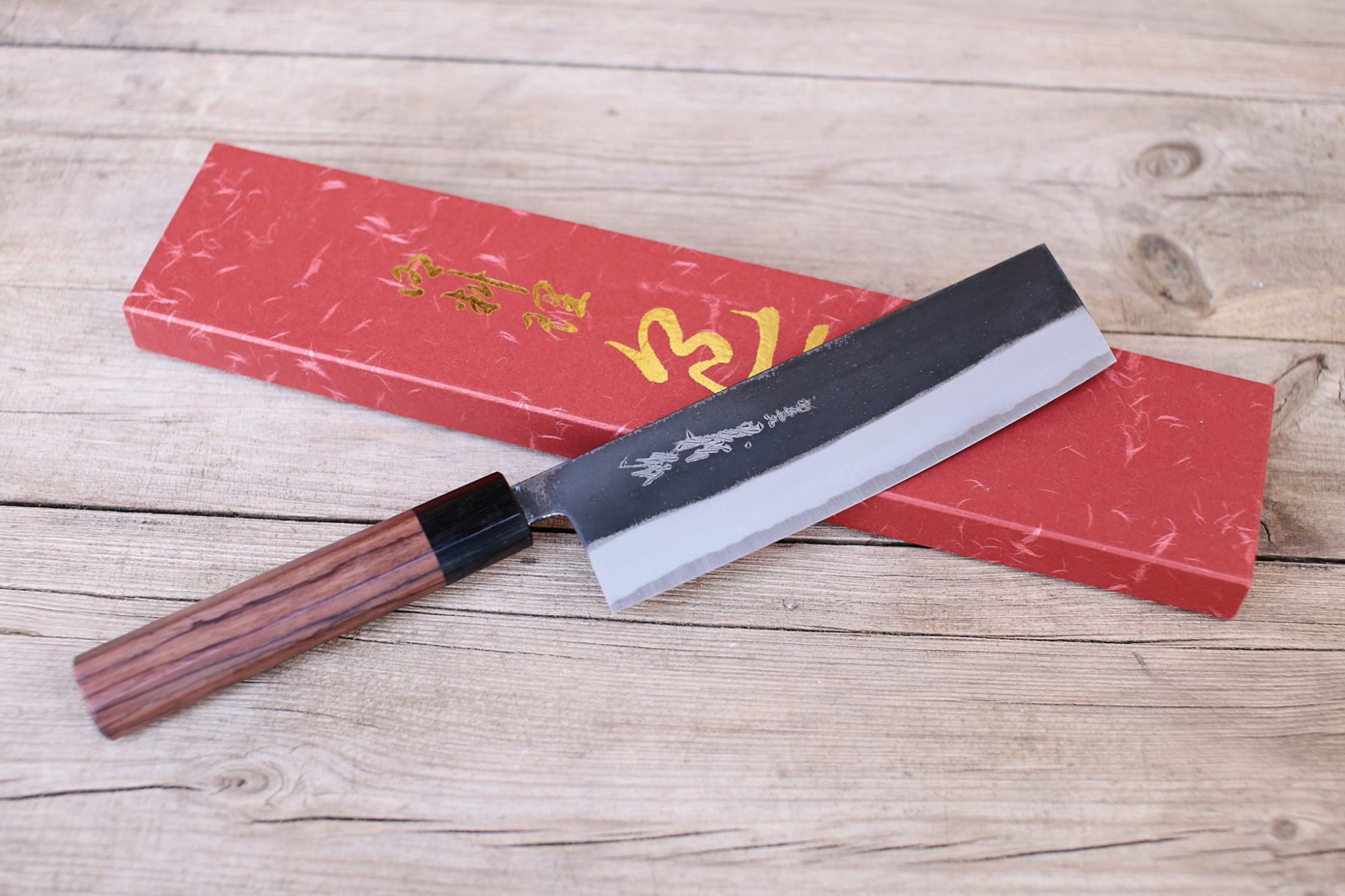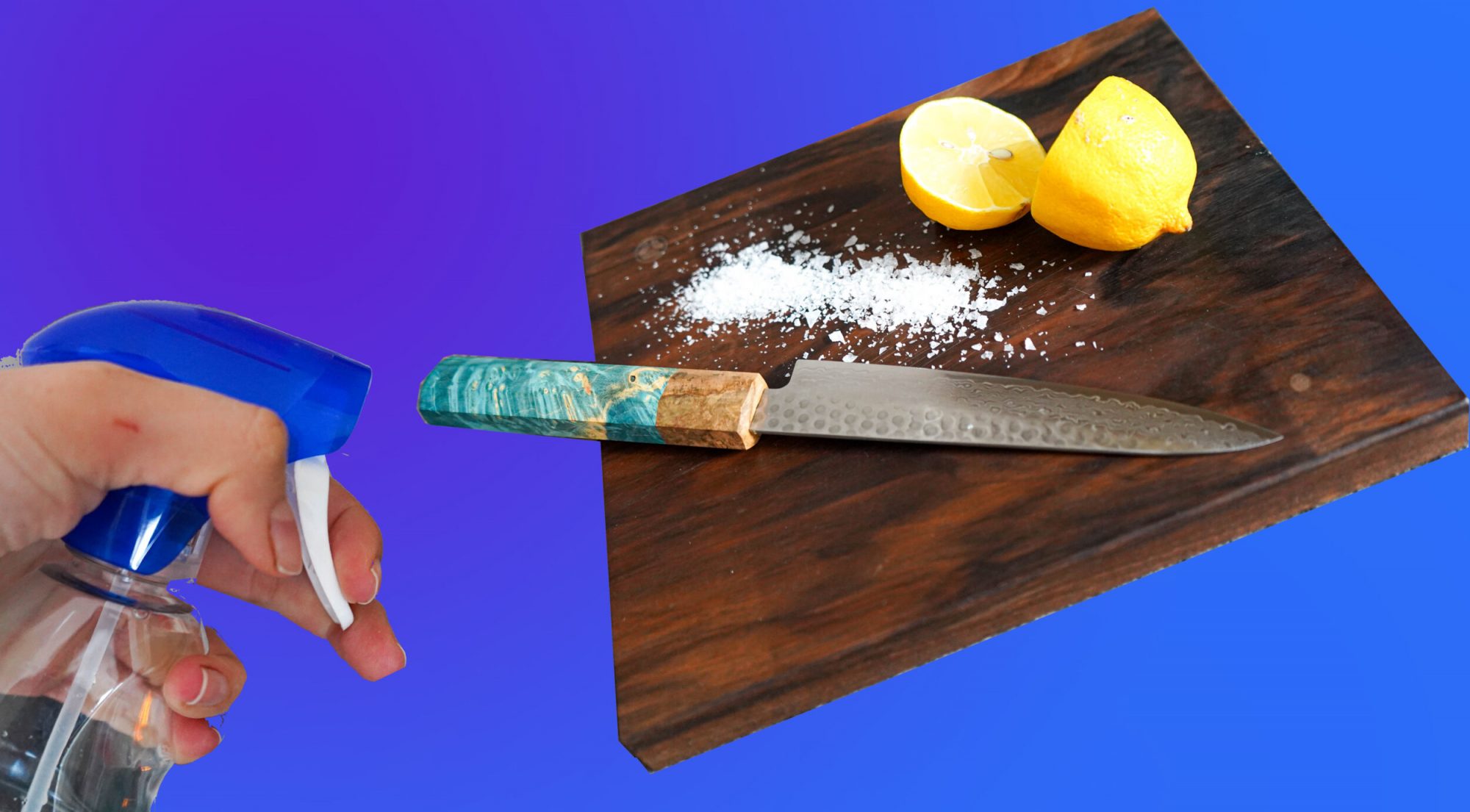You often ask us: how does a ceramic knife differ from a metal knife and which is better? Is ceramic knife better than a steel knife?
The short answer is: it depends on what purpose you want the knife for.
The long answer is more complicated. Let’s see which type is victorious in the ulitmate Ceramic vs. Steel Knife showdown.
Both types of knives perform really good if used for the right purpose. The only difference is the material the blade is made out of. And if you know anything about knives, you’ll know the blade is the most important part of the knife, thus making ceramic and metal knives very different. To make things simple for you, we’ve compared and listed all main pros and cons for ceramic knives with regards to metal/steel knives. Enjoy!
The PROS
SHARPNESS
The materials that make up a ceramic blade are very hard. In fact, ceramic is the second hardest material, right after diamonds. As a result, it can keep its razor sharp edge and will not wear out. If you ever do need to sharpen it, most of the manufacturers will sharpen it for free. Mass manufacturers of metal knives will never offer you that service since they need to be sharpened so often. The situation with traditional Japanese knives looks slightly different – most blacksmiths require sellers to provide sharpening service as it’s seen as a matter of pride and prestige of Japanese products. Those who sell Japanese knives online shall provide sharpening tools such as whetstones and comprehensive information on how to sharpen the knife and maintain it.
See Also: 7 Tips For Keeping Your Kitchen Knives Sharp And Safe
ODOURS
Ceramic material is not very porous. This keeps the blade from transferring odours from one food ingredient to another. You can cut something spicy, give it a quick rinse and then cut something else. The spiciness won’t transfer to the next food item. Some steel knives will transfer tastes if not cleaner properly.
RUST
That should go without saying – no metal means no rust.
SANITARY
Ceramic blades are very dense, with very little pores. Just like your face, the fewer pores there are, the less dirt and grime can get into the pores. A quick rinse in warm water will get your ceramic knife a lot cleaner than a thorough scrubbing on a metal knife.
WEIGHT
Ceramic material is very light. The lighter the weight, the less strain on your arms and shoulders. You can rip through all your cutting like a pro. On the other hand, you want to feel that you are holding a tool in your hand. The good thing with Japanese and German knives is that they tend to be well-balanced, giving the sturdy feel when working.
And CONS
BRITTLENESS
As you may remember from our latest post, more hardness means more fragility (a paradox? :). High hardness doesn’t mean it isn’t breakable. Ceramic knives aren’t meant to cut hard food such as frozen foods, bones, or anything that isn’t easily sliced. The blade is sharpened so thin that anything hard can put a chip in it. Chips can be fixed with sharpening but we still do not recommend it with ceramic knives (Japanese knives is a whole different story…). Sharpening a ceramic knife at home is largely impossible.
PRICE TAG
Ceramic knives tend to be a bit cheaper than the high-end steel knives. Almost all ceramic knives are very high end, but the lack of low-end models makes cost an issue.
VERSATILITY
It is not the most versatile knife in the kitchen. It doesn’t make a great all-purpose knife (unlike those Japanese gyutos), but it does excel at it’s intended purpose – slicing! Save those rough tasks for your deba knife.
Should I consider ceramic over a metal knife?
Our eternal love for Japanese knives does not allow us to be objective. While ceramic knives win a bit in terms of price tag, we are still standing by the superiority of Japanese knives; for their versatility, beauty, history and nowhere-else-to-be-found sharpness and edge retention.
Example of a ceramic knife: Kyocera Ultimate Ceramic Chef Knives 3-Piece Set
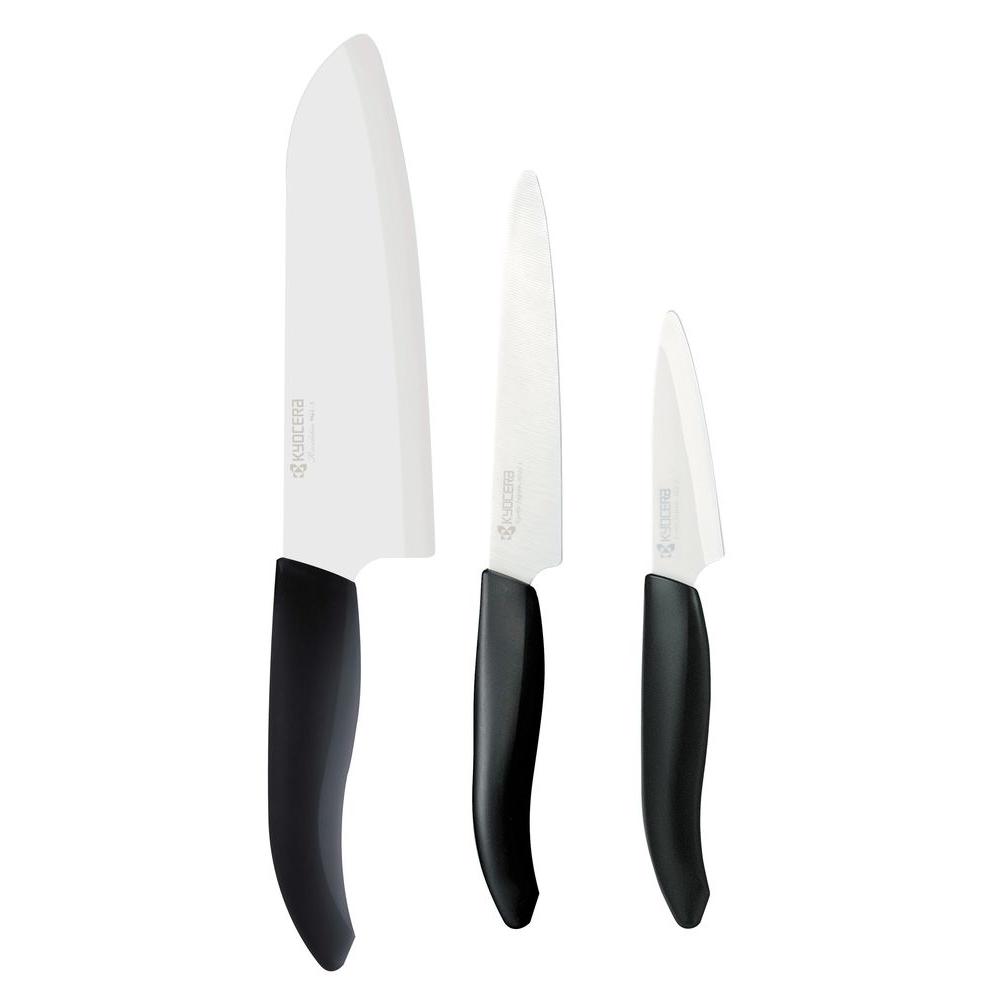
What’s interesting about this Yoshihiro knife is that it’s made of Yasugi steel – an equivalent of Aogami Blue Steel #1. (To read more about qualities of Yasugi steel, check our other article here.)
Happy knife hunting!










